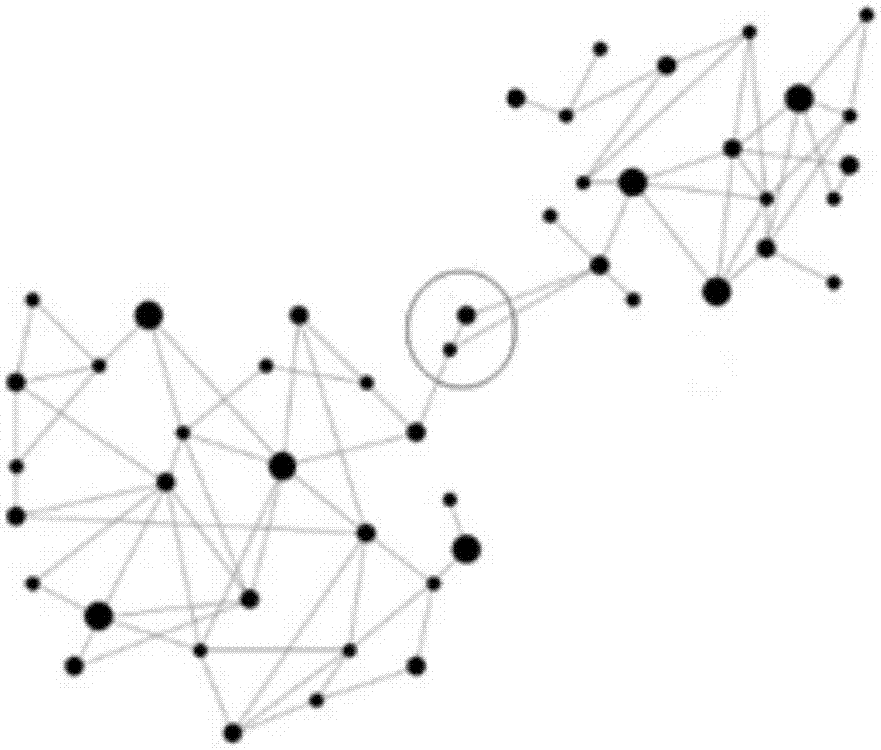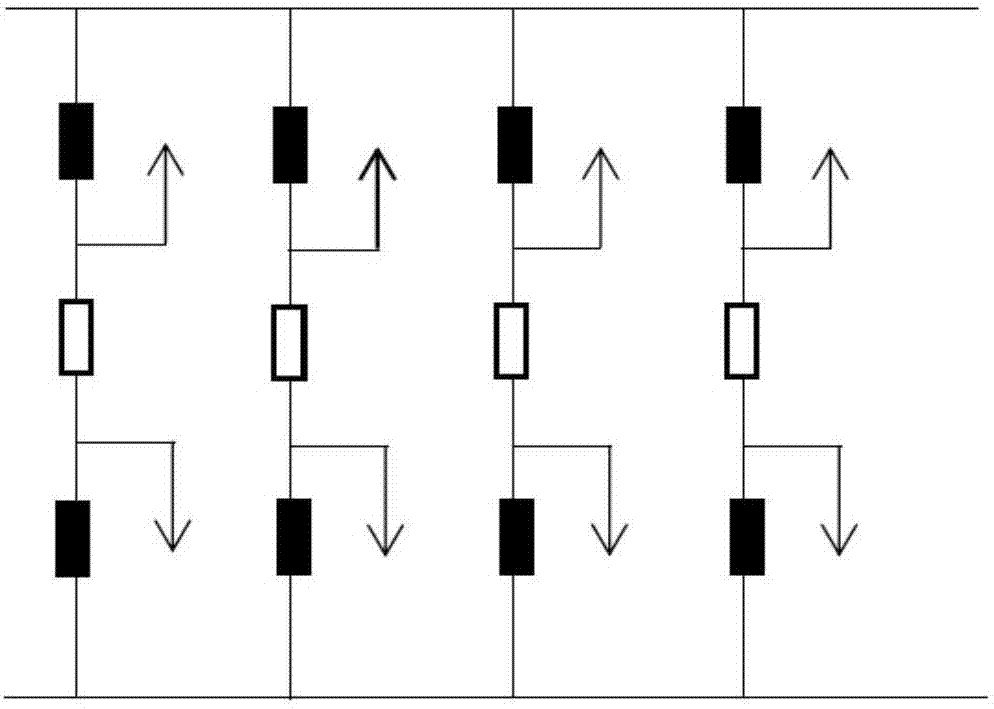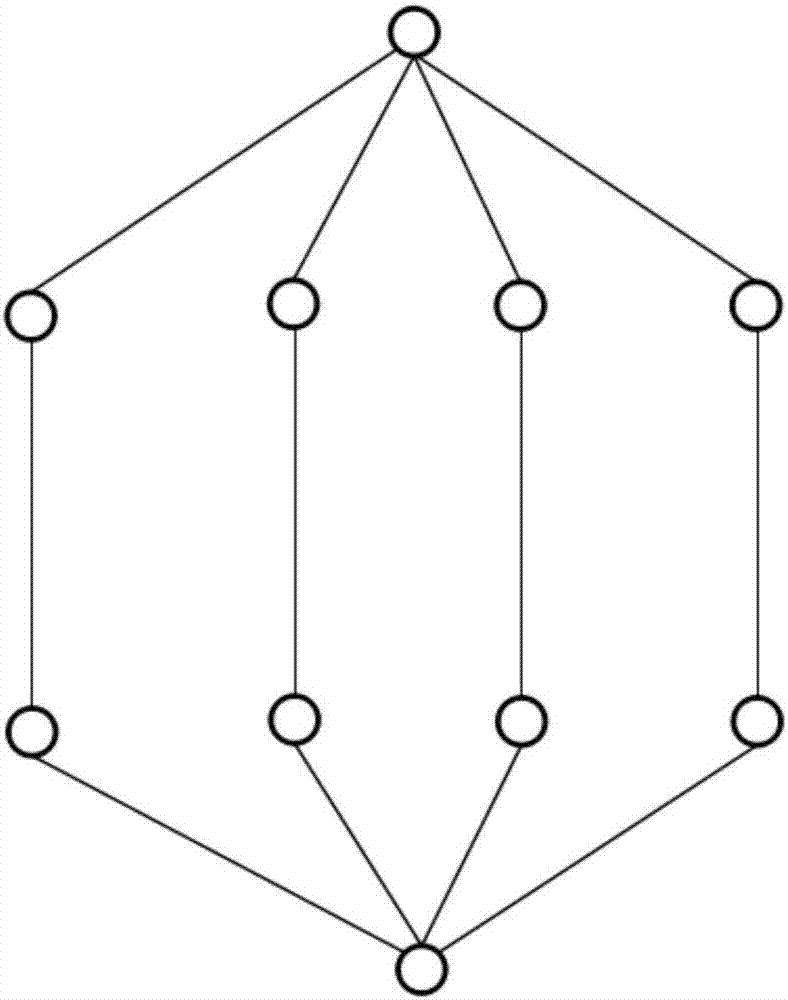Large power grid splitting method based on community and structural hole conjoint analysis and storage medium
A joint analysis and structural hole technology, applied in the field of power grid informatization, can solve the problems of inaccurately finding key sections, ignoring structural hole node analysis, and affecting the effectiveness of power grid segmentation, so as to ensure reasonable and standardized partitioning, improve quality, and accuracy Enhanced effect
- Summary
- Abstract
- Description
- Claims
- Application Information
AI Technical Summary
Problems solved by technology
Method used
Image
Examples
Embodiment 1
[0085] Please refer to figure 2 , image 3 with Figure 5 This embodiment provides a large power grid segmentation method based on the joint analysis of power grid communities and structural holes, which is applied to the power grid segmentation process when the large interconnected power grid is operated and managed in a district. This embodiment is different from the traditional grid division method. When dividing the grid, both the discovery of the grid equipment community and the discovery of structural holes are taken into consideration. In the grid topology, the tasks of community discovery and structural hole discovery are performed at the same time to obtain a better community structure, and based on this, the grid is divided.
[0086] First, like figure 2 with image 3 As shown, the generators, substations, loads, and connected transmission lines in the power grid are simplified into a topology diagram, that is, the power grid circuit diagram is converted into a grid to...
Embodiment 2
[0093] This embodiment is further expanded on the basis of the first embodiment, and details the process of modeling the grid community and structural holes based on the harmonic function to finally obtain the grid community.
[0094] Specifically, the process includes:
[0095] S1: Take the transformed grid topology diagram as input; suppose F is a matrix of n rows and m columns representing the subordination probability of nodes and communities, where n is the number of nodes. In addition, the user also needs to enter the number of structural holes to be discovered k and the number of communities m.
[0096] S2: Obtain the adjacency matrix A and the degree matrix D corresponding to the graph according to the inputted grid topology diagram;
[0097] S3: According to the formula L=D -1 A-I, calculate the regularized Laplacian matrix L of random walk;
[0098] S4: Obtain the characteristic index matrix through iterative learning, and obtain the node corresponding to the structural hole ...
Embodiment 3
[0112] This embodiment corresponds to the second embodiment and provides a computer-readable storage medium on which a computer program is stored, and when the program is executed by a processor, the following steps are implemented:
[0113] According to the grid topology diagram, the corresponding adjacency matrix A and degree matrix D are obtained;
[0114] According to the formula L=D- 1 A-I, substituting the adjacency matrix A and the degree matrix D to calculate the random walk regularized Laplacian matrix L, where I is the identity matrix;
[0115] Perform iterative learning according to the regularized Laplacian matrix L of the random walk to obtain a characteristic index matrix; this step specifically includes: S01: Let F be the subordination probability of nodes and communities corresponding to the grid topology A characteristic index matrix with n rows and m columns;
[0116] S02: Let F after random initialization be F t , T represents the number of iterations;
[0117] S03: ...
PUM
 Login to View More
Login to View More Abstract
Description
Claims
Application Information
 Login to View More
Login to View More - R&D
- Intellectual Property
- Life Sciences
- Materials
- Tech Scout
- Unparalleled Data Quality
- Higher Quality Content
- 60% Fewer Hallucinations
Browse by: Latest US Patents, China's latest patents, Technical Efficacy Thesaurus, Application Domain, Technology Topic, Popular Technical Reports.
© 2025 PatSnap. All rights reserved.Legal|Privacy policy|Modern Slavery Act Transparency Statement|Sitemap|About US| Contact US: help@patsnap.com



